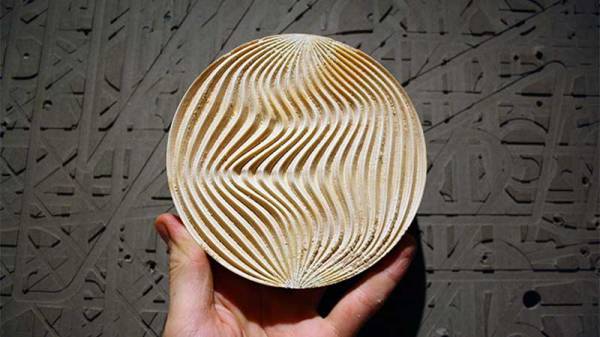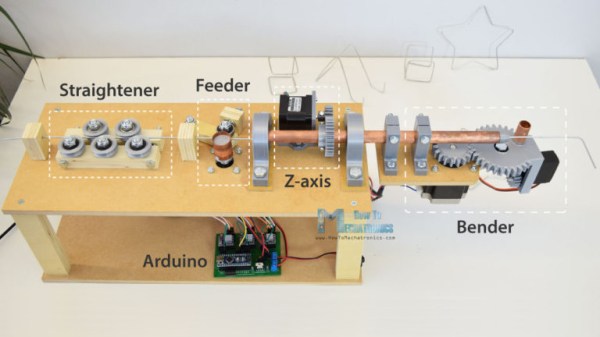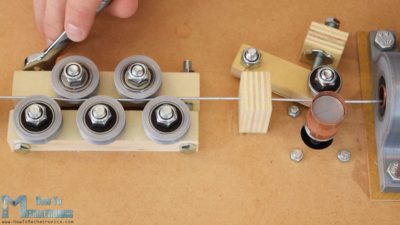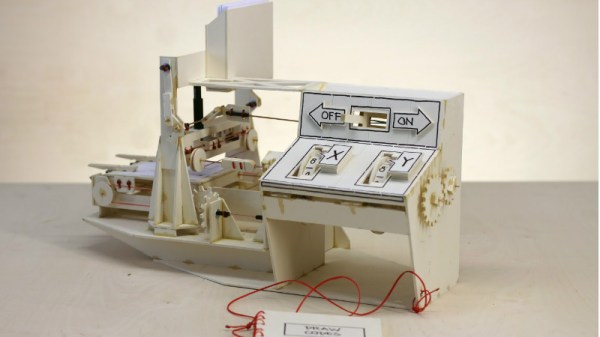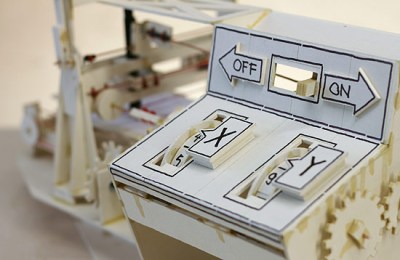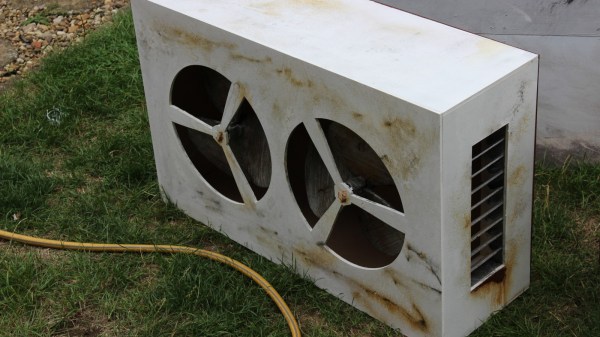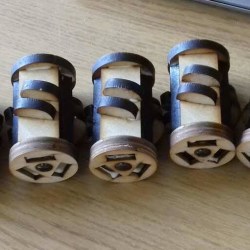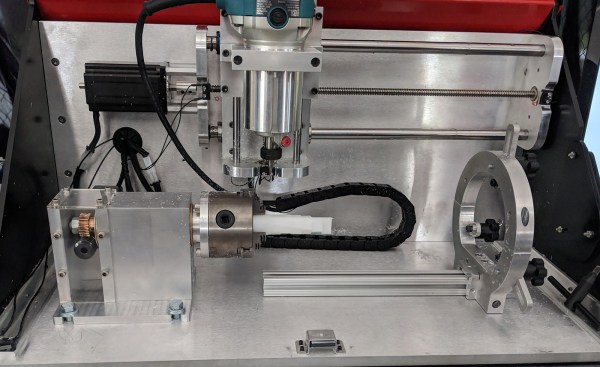Now that 3D printers are everywhere, electronics are cheap, and open source software is extremely capable, just about anyone can build a CNC machine. That’s exactly what [Nikodem] did by turning a Dremel tool into an extremely capable CNC machine that’s able to cut MDF and acrylic and can engrave aluminum.
The electronics for the build are just an Arduino Uno, a motor driver sheld running GRBL, a relay for the Dremel, a few motor drivers, and a big ‘ol 30 A power supply. The build uses NEMA 17 motors, two on the Y-axis and one each on the X and Z. The CNC has a fantastically strong frame despite the 3D printed parts. It is constructed out of aluminum extrusion, with the carriages riding on some nice straight rods.
As for how well this CNC machine works, it’s pretty good. With the Gcode to cut an 80mm diameter circle out of MDF, this machine managed to cut a circle that was 80.02 mm in diameter. That’s pretty good, and getting into the territory that the error is probably in the cheap set of calipers, not the finished part itself. It’s an awesome build, and [Nikodem] has everything documented in his four-part video series. You can check the end of that out below.

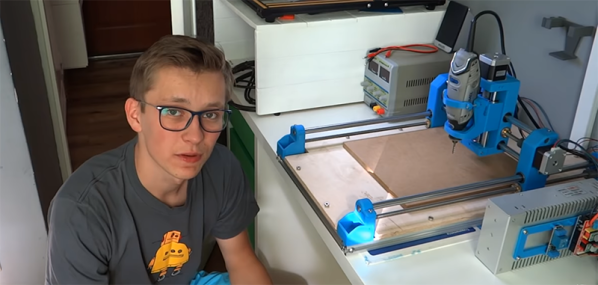
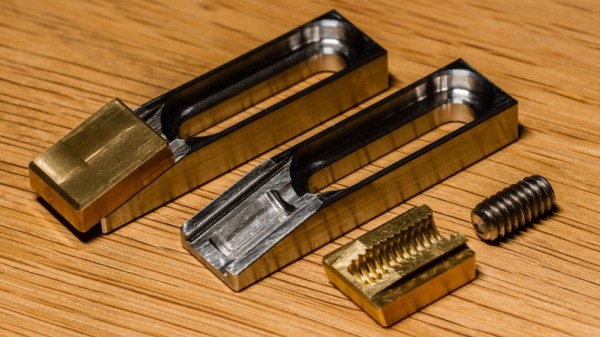
 The usual way to secure a piece of stock to a fixturing table is to use top-down clamps, which hold the workpiece from the top and screw down into the table. However, this method limits how much of the stock can be accessed by the cutting tool, because the clamps are in the way. The most common way around this is to mount a vise to the table and clamp the workpiece in that. This leaves the top surface completely accessible. Unfortunately, [Kevin]’s benchtop Roland MDX-450 has a limited work area and he simply couldn’t spare the room. His solution was toe clamps, which screw down to the table and have little tabs that move inwards and downward. The tabs do the work of clamping and securing a piece of stock while maintaining a very low profile themselves.
The usual way to secure a piece of stock to a fixturing table is to use top-down clamps, which hold the workpiece from the top and screw down into the table. However, this method limits how much of the stock can be accessed by the cutting tool, because the clamps are in the way. The most common way around this is to mount a vise to the table and clamp the workpiece in that. This leaves the top surface completely accessible. Unfortunately, [Kevin]’s benchtop Roland MDX-450 has a limited work area and he simply couldn’t spare the room. His solution was toe clamps, which screw down to the table and have little tabs that move inwards and downward. The tabs do the work of clamping and securing a piece of stock while maintaining a very low profile themselves.